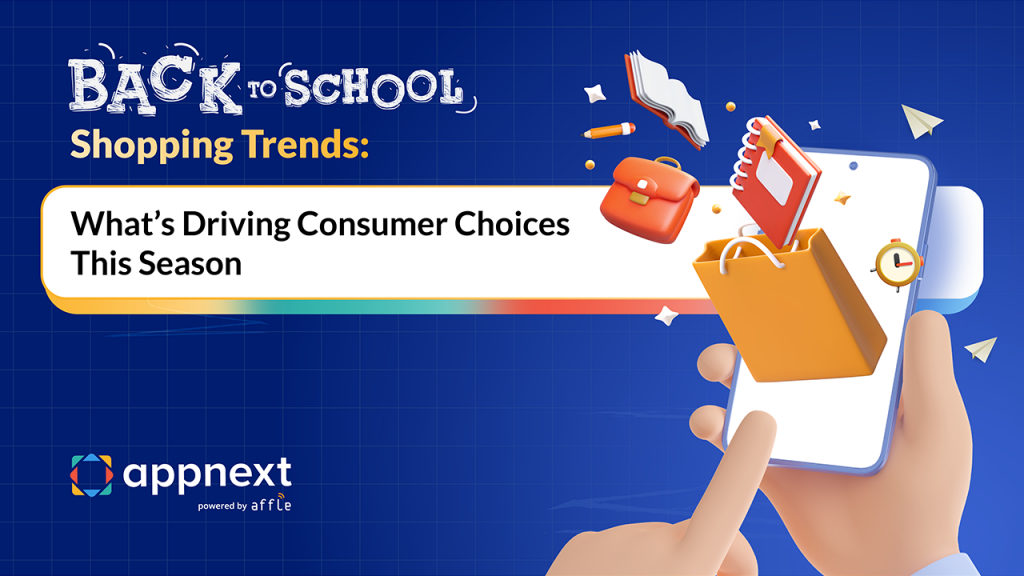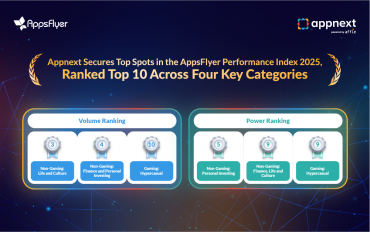What’s the first thing that comes to mind when you think of back-to-school season? Maybe it’s the smell of new books, the buzz of fresh notebooks, or the excitement and nerves of a first day. But for marketers, it’s a critical shopping season, bursting with opportunity.
So what triggers a consumer’s shopping spree right before schools and colleges reopen? When do they start shopping, how do they decide what to buy, and where do they spend their money?
Let’s dive into the key factors of this exciting season and how marketers can create campaigns that truly connect and convert.
1. When Does This Shopping Really Begin?
Back-to-school shopping is more of a carefully planned mission than a last-minute dash. Nearly 60% of parents start back-to-school shopping by the end of July (36% by June), driven by a desire to avoid stress, spread expenses, and capitalize on early promotions.. Sensormatic Solutions also reports that 18% of shoppers now kick off their back-to-school purchases in June, reflecting a shift toward even earlier planning year over year. Brands that engage shoppers early with timely deals and helpful guides are better positioned to capture this proactive audience. Source
Brands that launch campaigns early and maintain momentum with exclusive pre-season deals or back-to-school guides have the upper hand. Early-bird specials are not just appreciated—they are expected.
2. Where Are Shoppers Spending Their Time?
While many still appreciate the in-store experience, online shopping now dominates back-to-school purchases. In 2024, about 55% of K-12 back-to-school shoppers preferred buying online, with mobile devices accounting for a large share of transactions. Consumers rely heavily on their smartphones to research products, compare prices, read reviews, and make quick purchases.
A seamless omnichannel experience is key—brands that combine mobile-first websites, influencer-led promotions, and shoppable social media posts see stronger engagement. Additionally, 41% of shoppers split their budgets between online and offline channels, making it crucial for retailers to integrate both experiences effectively. A frictionless journey from discovery to checkout ensures higher satisfaction and conversion rates.
Source
3. What Personal Touches Matter?
Would you send the same checklist to a freshman in college and a first-grader? Of course not. Shoppers crave personalized experiences that speak directly to their needs and life stages.
Brands that invest in data-driven segmentation and dynamic ads tailored to browsing behavior and preferences will hit the mark. Personalization transforms generic messaging into meaningful connections.
4. Category Insights: What Are Consumers Buying?
Stationery & Supplies: The Essentials
School supplies are an essential spend, with 96% of K-12 households expected to purchase items like notebooks, pens, folders, and backpacks this season. According to the National Retail Federation (NRF), total back-to-school spending on school supplies alone is projected to reach $18.2 billion in 2024. Additionally, prices are seeing shifts-notebook prices have slightly decreased due to lower paper costs, while backpack prices have increased because of enhanced designs (Times of India).
Interestingly, 83% of parents report that their children influence school supply purchases, highlighting a growing trend toward personalized shopping experiences (Numerator).
Electronics: Value Over Luxury
Technology continues to top back-to-school shopping lists. For 2024, Deloitte forecasts that families will spend an average of $309 per K-12 student on electronics like laptops, tablets, and headphones. College-bound students plan to spend even more-about $359 per student. However, Deloitte also reports a slight 11% decline in tech spending compared to last year, driven by inflationary pressures and cautious consumer behavior (Reuters).
This puts a premium on offering high-value, durable tech products that balance quality and price.
Clothing: Sustainable Styles
Back-to-school wardrobes remain a major focus. 94% of shoppers are expected to purchase clothing for the new school year. NRF data indicates that spending on apparel and accessories will reach about $11 billion for K-12 students, with families allocating roughly $253 per household. Sustainability trends are growing stronger-71% of parents are opting for brands that offer eco-friendly clothing, including organic cotton and recycled materials.
Footwear: Comfort & Durability
Footwear is also key, with 94% of back-to-school shoppers planning to buy new shoes. NRF estimates that shoe purchases will account for about $7.6 billion of the back-to-school spend. Parents are increasingly prioritizing durability and comfort, especially with many students wearing sneakers every day. Additionally, a small but rising segment-around 20% of shoppers-are considering sustainable or secondhand shoe options, aligning with broader eco-conscious trends (NRF 2024 Survey).
Other Supplies
Beyond the basics, backpacks, lunch boxes, and reusable water bottles are seeing strong demand. 58% of families plan to purchase these items this season, with many preferring eco-friendly, reusable products. The trend toward sustainability extends further-43% of shoppers are open to buying pre-owned or refurbished school items to save money and reduce waste (Numerator).
Brands that align with these values-durability, eco-friendliness, and personalization-are better positioned to win over today’s mindful shoppers.
5. How Sensitive Are Shoppers to Price?
With inflation and economic uncertainty top of mind, consumers are extra careful about spending. They seek value and transparency—no one wants hidden fees or gimmicks.
Highlighting bundle deals, flexible payment options like “buy now, pay later,” and transparent pricing models can help brands build trust and drive conversions.
6. What Role Does Technology Play?
Technology is no longer a luxury—it’s essential to modern learning. But it’s not just about laptops and tablets. Mobile apps now drive how students learn, stay organized, and shop for school essentials.
With Appnext’s discovery platform, users are seamlessly connected to educational tools, productivity apps, and shopping solutions—right when they need them. By positioning mobile tech as a core academic enabler, brands can engage today’s mobile-first consumers more effectively.
In 2024, school success starts with smart apps—and smart discovery.
7. How Can Brands Tap Into Emotions?
Back-to-school is emotional-full of excitement, nostalgia, and a touch of anxiety. Tapping into these emotions can create lasting connections.
Storytelling is a powerful tool. Narratives about a student’s first day at college or a parent’s pride in their child’s milestones can humanize your brand and foster deeper engagement.
Wrapping Up
Back-to-school isn’t just about filling carts-it’s about new beginnings, ambitions, and dreams. By asking the right questions and tuning into consumer mindsets, marketers can transform this season into a growth engine. To leverage these trends and connect with your target audience during the crucial back-to-school season, explore Appnext’s innovative mobile discovery solutions




Comments are closed.